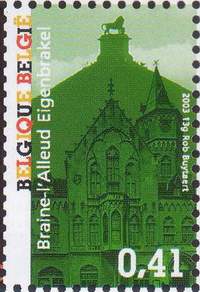Manifestations (préventes, bourses, etc...)
Exposition internationale et bureau temporaire Braphil '15
SCOTT John Royal Philatelic Society London
Images of the Napoleonic Era
 By 1800 the possibility of using printed stationery to convey a political or social message was just beginning to be understood whereas for much of the previous century the embellishment of writing paper had been confined to decorative stencilled designs of a fairly rudimentary nature. However the style differed markedly from one country to another and this display explores some of the characteristics that distinguished the nations involved. The exhibit ends with a selection of Napoleonic images taken from later in the nineteenth century when an era of commemoration had commenced.
By 1800 the possibility of using printed stationery to convey a political or social message was just beginning to be understood whereas for much of the previous century the embellishment of writing paper had been confined to decorative stencilled designs of a fairly rudimentary nature. However the style differed markedly from one country to another and this display explores some of the characteristics that distinguished the nations involved. The exhibit ends with a selection of Napoleonic images taken from later in the nineteenth century when an era of commemoration had commenced.
Amongst the most striking printed stationery of the period was that produced by French authorities after the Revolution when letters from Government departments, local authorities and the military were embellished with revolutionary slogans and engraved images of the highest quality. By contrast, the French soldier fighting in the field used quite primitive but highly coloured images for their letters whereas no such examples are known from British combatants. The designs of the Napoleonic regime, which seemed almost to be a demonstration of the permanence and legitimacy of the Government, extended across the occupied countries of Europe including Italy and Belgium.
In contrast printed stationery in Great Britain during the same period was confined almost exclusively to commercial activities whilst the politically inspired designs were embossed around four sides of the sheet, sometimes with the addition of a thin coloured edge to the paper. Often such productions can be dated from the watermark in the absence of any other indication from which it is evident that some examples were produced specifically to commemorate the allied victories on the battlefield.

On continental Europe another subtle form of propaganda emerged with the commemorative watermark featuring a portrait of the ruler on one side of the folded sheet and a national symbol on the adjoining page. Such devices in the form of monarchist symbols had been used prior to the French Revolution and proved to have a more lasting influence in that, while it was possible to deface any printed representations, the watermark lingered on unless the paper itself was destroyed.
As the nineteenth century progressed, images of Wellington and of Napoleon in particular emerged as symbols of national pride on both writing paper and other ephemeral material.

